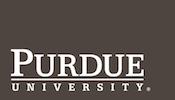Abstract
Background: Human breast milk has been shown to improve the health outcomes of infants. When an infant’s mother’s milk is not available donated breast milk is an option; however, donated human breast milk has a limited supply and is very costly. To increase the supply and availability of donated breast milk we must first understand the population of breast milk donors and the obstacles they experience throughout the donation process. Purpose: To determine the significance of human milk donor demographic and obstacles encountered during the donation process. Methods: A cross-sectional online survey with a convenience sample of 227 women who previously donated breastmilk from various regions of the United States collected information on their demographics and whether they encountered an obstacle during the donation process, such as having difficulty transporting milk to bank, finding time to pump, etc. Descriptive statistics and logistic regressions were conducted using SPSS software. Results: Out of the sample of 227 women, the average woman was white, 33 years old, employed, holding a graduate or professional degree, and living in an owned home in a suburban community with a household earnings of $50,000 or more annually. At a significance level of 0.1, there was no evidence that race, employment, education, type of residence, community, or household income was associated with a higher rate of obstacles to donate breastmilk encountered. Conclusions: Demographics could influence a mother’s chances of experiencing obstacles during the process of donating breast milk. Response bias and lurking variables may exist. Further studies with more diverse populations are needed.
Keywords
breastfeeding, breast milk donation, social determinants of health
Select the category the research project fits.
Life Sciences
Is this submission part of ICaP/PW (Introductory Composition at Purdue/Professional Writing)?
No
Recommended Citation
Hornsby, Claire, "Social Factors Associated with Obstacles to Human Milk Donation" (2019). Purdue Undergraduate Research Conference. 37.
https://docs.lib.purdue.edu/purc/2019/Posters/37
Social Factors Associated with Obstacles to Human Milk Donation
Background: Human breast milk has been shown to improve the health outcomes of infants. When an infant’s mother’s milk is not available donated breast milk is an option; however, donated human breast milk has a limited supply and is very costly. To increase the supply and availability of donated breast milk we must first understand the population of breast milk donors and the obstacles they experience throughout the donation process. Purpose: To determine the significance of human milk donor demographic and obstacles encountered during the donation process. Methods: A cross-sectional online survey with a convenience sample of 227 women who previously donated breastmilk from various regions of the United States collected information on their demographics and whether they encountered an obstacle during the donation process, such as having difficulty transporting milk to bank, finding time to pump, etc. Descriptive statistics and logistic regressions were conducted using SPSS software. Results: Out of the sample of 227 women, the average woman was white, 33 years old, employed, holding a graduate or professional degree, and living in an owned home in a suburban community with a household earnings of $50,000 or more annually. At a significance level of 0.1, there was no evidence that race, employment, education, type of residence, community, or household income was associated with a higher rate of obstacles to donate breastmilk encountered. Conclusions: Demographics could influence a mother’s chances of experiencing obstacles during the process of donating breast milk. Response bias and lurking variables may exist. Further studies with more diverse populations are needed.

